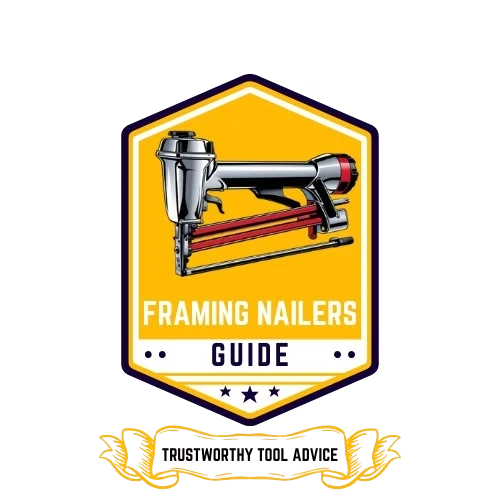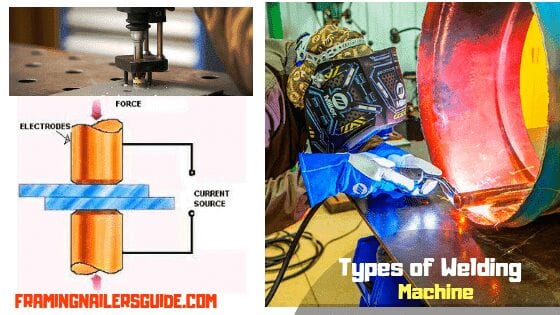
Table of Contents
Last Updated on March 2, 2021 by John Patterson
Welding is something that had been there for ages. No matter its carpentry, auto repairs, home garage, or anywhere else- you must have a top-quality welder to keep things rolling.
In case you are about to start your life as a passionate welder, the types of welding machines article solely written for you. In this guide, we have talked about three of the most practiced welding techniques- Spot welding, MIG welding, and Stuff welding.
Related Reading: Mig and Tig welding differences.
We have explained how this welding is done, what sort of metals it’s compatible with, and which are the area of use. A few minutes of investment to read the whole post won’t be a loss for you at all!
3 Types of Welding Machines Explained
#1. Spot Welding
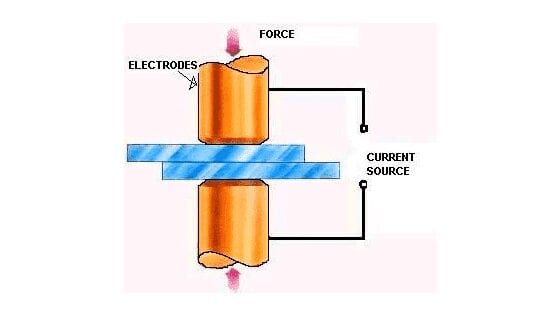
Spot welding or resistance spot welding is the process, which is based on generating a high level of heat from electric resistance. In simpler words,- electricity turns into heat energy when it’s passed through something of high resistance. Using this property of electricity, excessive heat energy is produced.
Once you’re done with producing that much heat energy, you’ll hold together the two metal surfaces that you want to weld together.
Using copper allow electrodes, the welding current is spotted into a tiny space, and the metal objects are clamped together. Meanwhile, the spotted out electricity creates heat that melts the joining surfaces of the metals together.
Due to such a working procedure, it’s called the spot welding process.
Application of Spot Welding
We cannot define the uses of spot welding in one word, as it has multiple aspects and variations in technique.
But we have found a wide variety of uses of this technique in sheet metal, wire mesh, welded wire mesh, and so on. The applications are in the automotive industry, robot manufacturing industry, and so on.
Another sort of application of the spot welder machine is nickel-cadmium, nickel-metal hydride, or even Lithium-ion batteries. These battery cells are prepared with the help of the spot welding technique.
#2. Brazing/Mig Welding
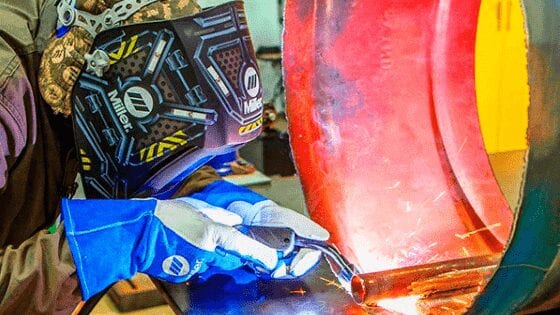
We’re sure that if you’ve been up to welding, you have heard of the MIG type of welding process. It stands for Metal Inert Gas, and the name quite explains the function it.
MIG welding uses a shield of gas along with a metal electrode. It heats the metal bodies that you are supposed to join with each other. To make sure that a MIG welding process goes fine, you need to ensure a consistent supply voltage and a direct current power source.
MIG welding is the most commonly practiced welding practice on an industrial basis. But if we have a more specific look, there are four more variations in terms of metal transfer technique-
- Globular metal transfer MIG welding.
- Short-circuiting metal transfer MIG welding.
- Spray-based metal transfer MIG welding.
- Pulsed spray-based metal transfer MIG welding.
Application of MIG Welding
Automotive repairs and auto works are the most familiar field of application, as long as MIG welding is concerned. No matter whichever size of vehicle you are dealing with, the repairs are done with the MIG welder machine.
The question is, why it is so? Why is automotive welding done in a MIG process?
Well, one of the many advantages of MIG welding is, it can execute some robust and sturdy welding results. Throughout the process, it can go up to 0.55mm precisely, which is hard to achieve with all other types of welding.
To get faster and much accurate service, MIG welding is also used vastly in robotics and industrial sectors. In sectors like pipe welding, it’s a pretty much cost useful idea. So welders do this a lot.
In the case of hard facing, or reinforcing metal surfaces, this welding technology catches some real demand. As different inert gases (argon, helium) are there, the types of metals that it is compatible with are also vast.
As an example, argon-based MIG welding is suitable to go with titanium, mild steel, and alloy metals. And helium-based MIG welding is good with steel, copper and stainless steel, etc.
#3. Stud Welding
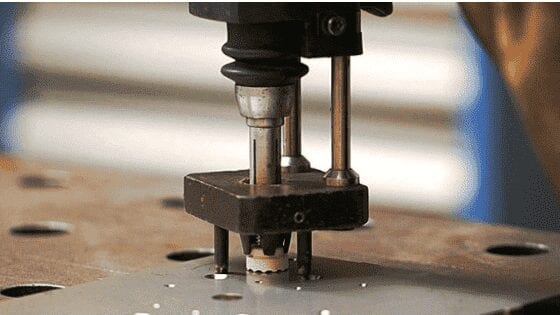
From the types mentioned above of welding, stud welding stands quite differently. In the previous two methods, they vary from welding technology. But in stud welding, it’s the subject to be welded, which creates the difference.
Put- stud welding is the technique to let metal fasteners like weld pins, weld studs, and tapped studs be welded into metal objects. For executing the process, the method they use contains an arc that melts the metal.
With the immense amount of heat, the arc melts down both metal subjects and creates a solid weld between them. A good thing about stud welding is, it is quite uniform, and it has a complete fusion across the flange.
Throughout this technique, no holes or punches are made through metal objects. So, the strength and sturdiness of the workpiece remain the same. And that’s what makes stud welding even more useful. So, we can call this process a leak-proof, hole-free process of welding.
Due to the precision and excellence that stud welding provided us with, it has a lot of applications in many fields. In the following section, we will take you through the applications of stud welding.
Applications of Stud Welding
To weld delicate metal objects that need to be healthy and sturdy even after the welding, stud welding is used majorly. The list of objects contains cooking pots, metal coffee makers, steam cookers, roofing, and sometimes, vehicles as well.
Unless we have a technology like Stud welding, we can hardly get to use many of our daily utensils. So, thanks to the technology for the blessing.
Bottom Line
Alright, so here is the summary line for today’s post- no matter whichever types of welding machines we’re talking about, it has its selling points. Based on what purpose you’re seeking a top-class welder machine for, you should make the best choice.
